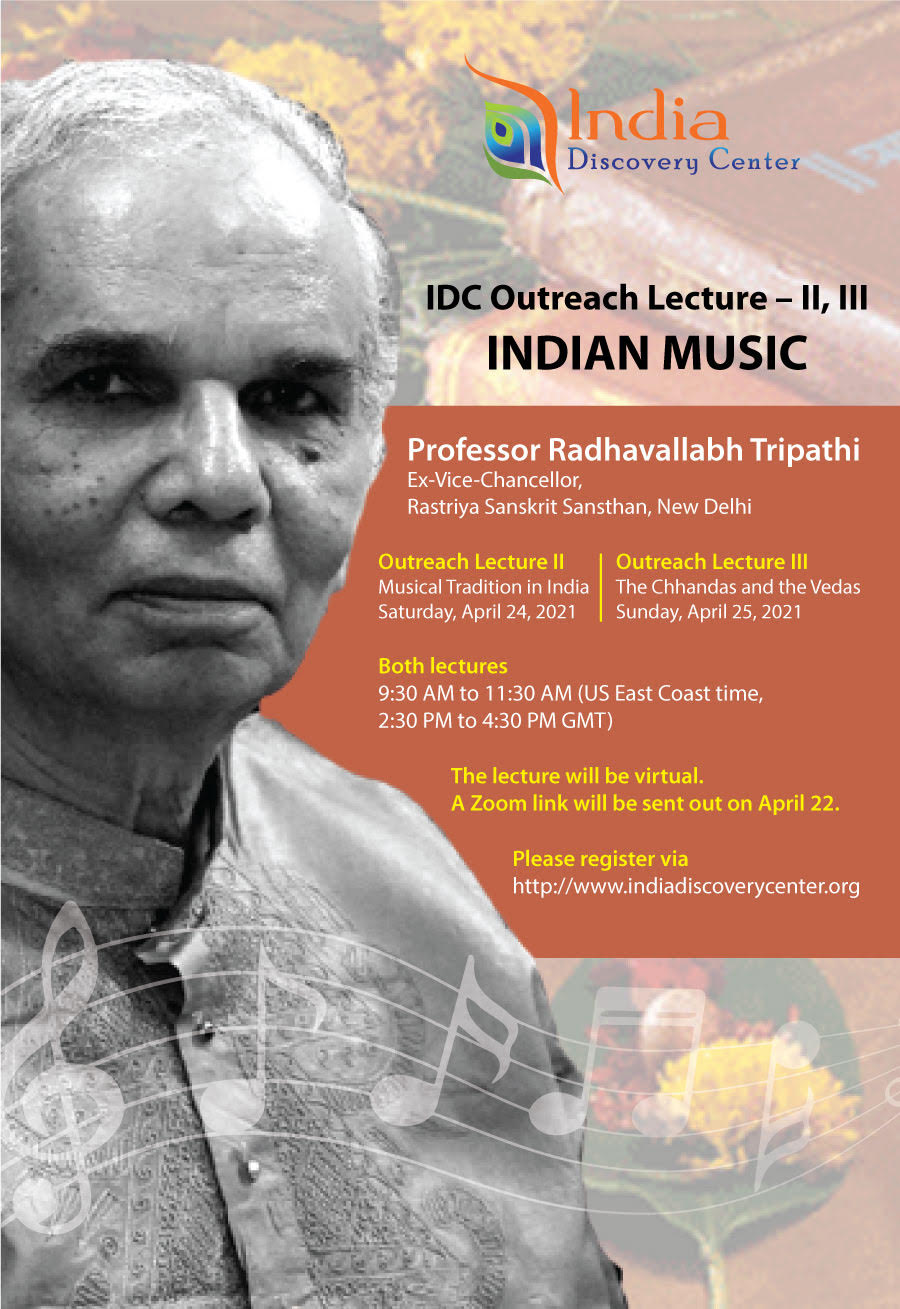
Outreach Lecture II and III – Indian Music
Presenter
Professor Radhavallab Tripathi
Ex Vice-Chancellor,
Rastriya Sanskrit Sansthan, New Delhi
Professor Radhavallabh Tripathi is one of the senior-most teachers of Sanskrit in India. He has served as Vice-Chancellor of Rashtriya Sanskrit Sansthan (Deemed University) at Delhi for five years (2008-13), as Vice Chancellor on additional charge at Shri Lal Bahadur Shasri Sanskrit Vidyapeeth for six months and as Vice Chancellor in charge of Dr. H.S. Gour University on a number of occasions. He worked as Visiting Professor at Silpakorn University, Bangkok for three years. He retired as Professor from Dr. Harisingh Gour University, Sagar (M.P., India) as Professor in February, 2014. He has worked as Fellow in Indian Institute of Advanced Study, Shimla for one year (2014-15) and has also occupied the Karnatak Chair of Orientology at the Bhandarkar Oriental Research Institute, Pune for two years. He is Known for his original contributions to the study of Nāṭyaśāstra and Sāhityaśāstra, and has published 175 books, 275 research papers and critical essays as well as translations of more than 30 Sanskrit plays and some classics from Sanskrit into Hindi. He has received 37 national and international awards and honours for his scholarly contributions as well as creative writings in Sanskrit and Hindi. He has been referred in various research journals on Indology. Research for Ph.D. has been completed as well as is being carried on his creative writings in Sanskrit in a number of Universities. Three Journals brought out special numbers on his writings. Seven books comprising studies on his creative and critical writings by other authors have been published.
Muscial Tradition in India
Saturday, April 24, 2021
India has a rich history of music beginning from the pre-historic times. The caves of Bhimabethaka and other archeological sites display activities related to music and dance from 25000 BCE to 10000 BCE. The earliest literary sources revealing glimpses of musical activities and knowledge of musicology occur in Ṛgveda and other Vedic texts which were composed between 10,000 BCE to 1500 BCE. The concept of stobha in Vedas is a pre-cursor of nāda and ālāpa. Sāmaveda gave the concept of svaras (musical notations) and pitch.
In this lecture we present an overview of the Indian Tradition of Music in theory and practice along with its development till the medieval times.
The Chandas and the Vedas
Sunday, April 25, 2021
The Chandas forms the foundation of the corpus of Vedic literature. The fundamental philosophy behind Chandaḥśāstra (Prosody) visualizes the whole cosmos vibrating with in laya (rhythm) gati (movement) combined with yati (pause). The Chandas is just a vehicle for carrying these vibrations making them explicit with tones and intonation. The cosmos is a śilpa (art) replenished with alaṅkāra. This śilpa is said to be chandomaya – created out of chandas which is imbued with rhythm, pause and movement. The universe has its own rhythmic patterns, movements and pauses. In the philosophy of the Vedic seers, there is a correlation between śilpa, chandas and yajña.
In this lecture, we propose to discuss the philosophy of the Chandas and the development of Chandaḥśāstra as envisaged through the Vedic literature.